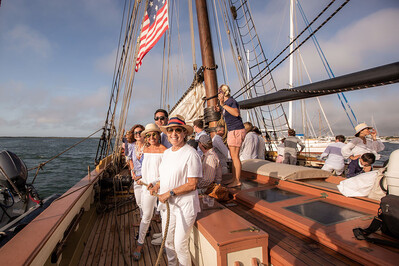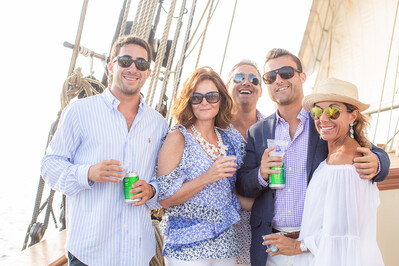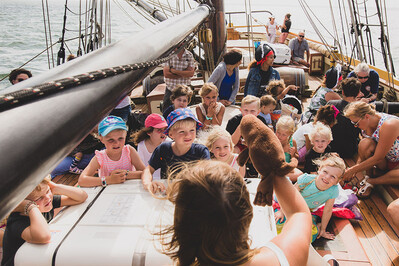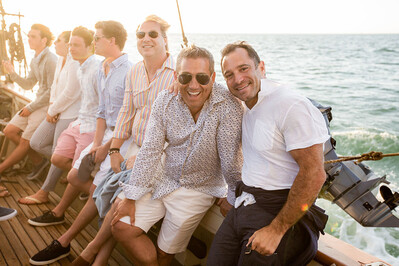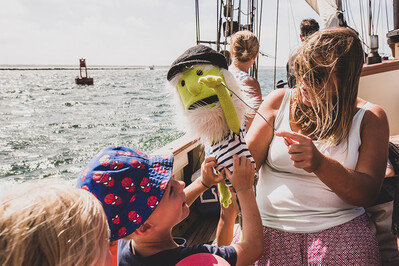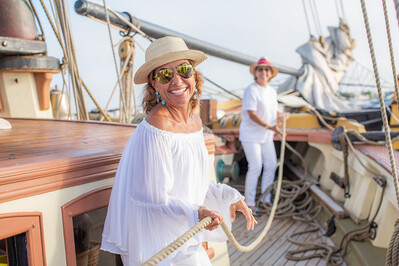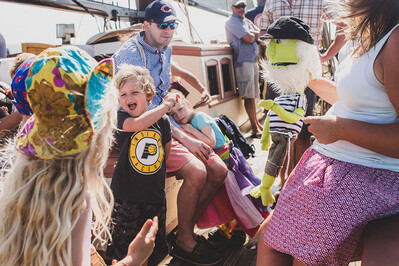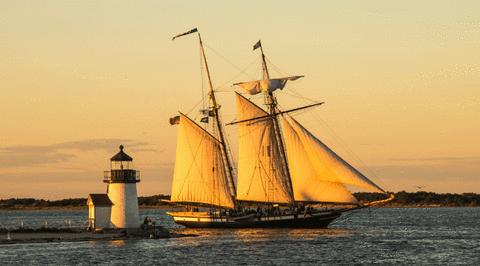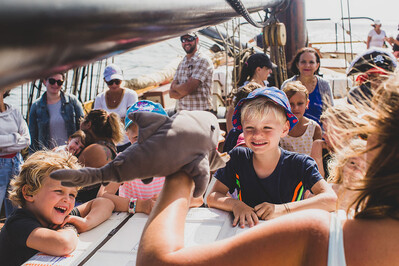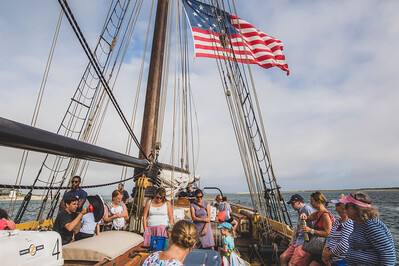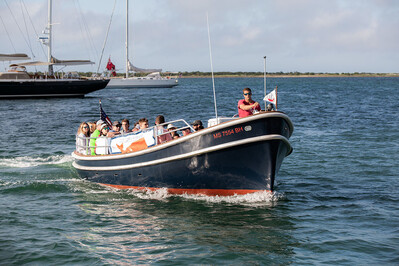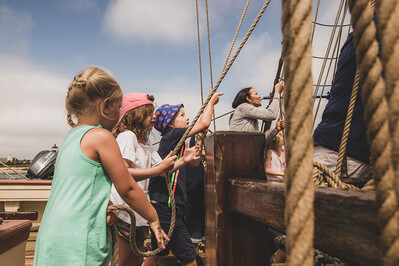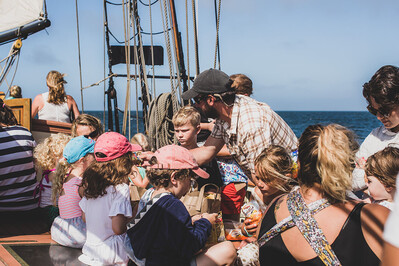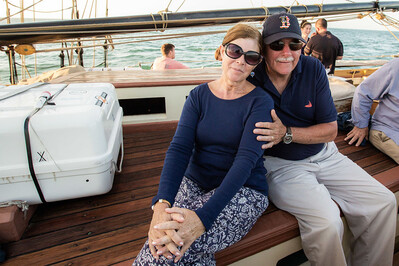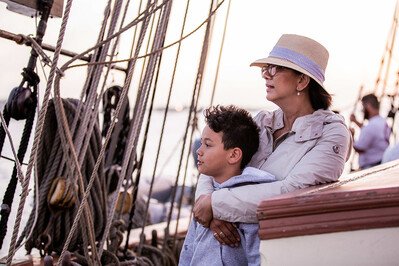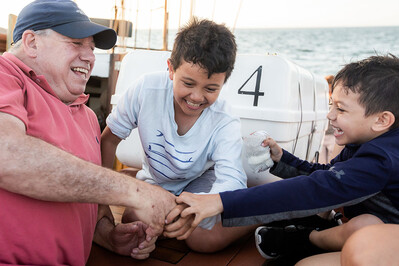
Set Sail in 2025
Egan Maritime and the Tall Ship Lynx offer a full season of engaging public programs. From a festive Fourth of July fireworks sail and golden-hour maritime music evenings to family-friendly dockside puppet shows and morning cruises with local breakfast treats, this summer’s calendar is designed to welcome the entire community aboard. Several programs are presented in collaboration with beloved local partners, including Nanpuppets, the Artists Association of Nantucket, and Lemon Press.
- Free Member Sail Aboard the Lynx: Thursday, June 12th: 5 pm
- Nanpuppets Aboard the Lynx - Dockside: Friday, June 13th: 10 am
- July 4th - Toast to Independence Day - Fireworks aboard the Lynx: Friday, July 4th: 7 pm
- Golden Hour Melodies: Maritime Music Aboard the Lynx: Wednesday, July 23rd: 5 pm
- Morning Breeze & Breakfast Treats Aboard the Lynx: Saturday, July 26th: 8 am
- Sunset Sail Aboard the Tall Ship Lynx – Nantucket’s Waterfront Through the Years: Wednesday, July 30th: 5 pm
- Golden Hour Melodies: Maritime Music Aboard the Lynx: Wednesday, August 13th: 5 pm
- Morning Breeze & Breakfast Treats Aboard the Lynx: Saturday, August 16th: 8 am
- Sunset Sail Aboard the Lynx – Sip, Sketch, & Sail (with the Artists Association of Nantucket): Wednesday, August 20th: 5 pm
- Free Members Sail Aboard the Lynx: Thursday, September 4th: 5 pm
Throughout the summer, Capt. Don Peacock owns and operates a separate business via the Lynx. His calendar includes daily sails, sunset cruises, and private charters. Egan Maritime members receive discounts on all Tall Ship Lynx Sails. To learn more about non-Egan Maritime-sponsored sails aboard the Tall Ship Lynx, visit: https://www.tallshiplynx.org/
2025 Tall Ship Lynx Chamber Experience Sail

Set Sail with Lynx: A Private Charter Experience for Nantucket Business - A Nantucket Chamber of Commerce Member Exclusive
Egan Maritime Institute and the Tall Ship Lynx have joined forces to offer Chamber members a unique opportunity to book a discounted charter aboard the Tall Ship Lynx.
This charter includes a mezze platter from Lemon Press and seltzers from Polar Seltzer. Guests are welcome to bring their own libations and snacks.
This opportunity is perfect for a staff party, team building and bonding, client or donor recognition, or treating your friends and family to sail through Nantucket’s harbor.
What is included:
• 2-Hour Sunset Sail for 36 (5:30 – 7:30)
• Round-Trip Launch Fees aboard the Nantucket Harbor Launch (if needed)
• Non-alcoholic drinks
• Mezze Platter & Assorted Aps from Lemon Press
To learn more and book this one-of-a-kind experience, contact Carlisle Jensen: cbjensen@eganmaritime.org
On-The-Water Education
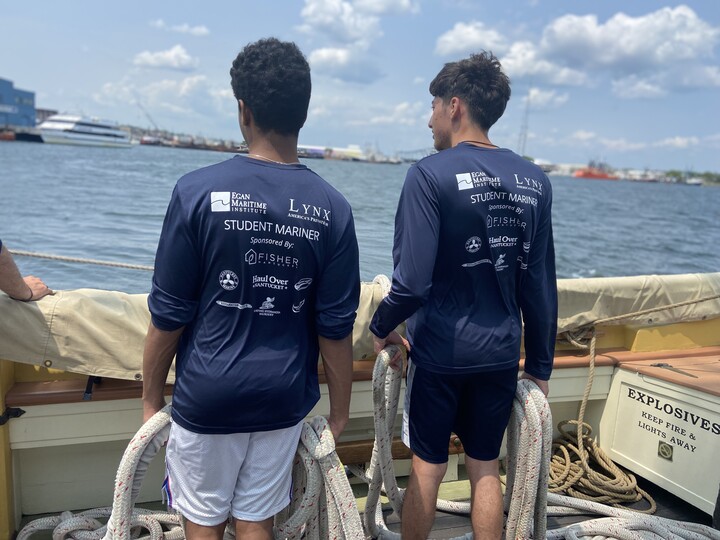
Since 2014, Egan Maritime has partnered with the Tall Ship Lynx to provide on-the-water sailing opportunities.
During May and June, Egan and the Lynx Educational Foundation teamed up to offer a unique opportunity for local students. Sailing aboard the historic Tall Ship Lynx, a cornerstone of the Egan Maritime student experience, is an unparalleled experiential educational opportunity. Over 500 local students climb aboard the Lynx, immersing themselves in Nantucket’s maritime history and oceanography and applying what they learn in the classroom to their sailing experience. These experiences are 100% free and supported through generous donations. If you want to support the 2024 sailing season, please email Carlisle Jensen at cbjensen@eganmaritime.org.
Our Lynx sails are not just about sailing but about planting seeds for future learning or career opportunities. At Egan, we aspire to inspire the next generation of “Salty Nantucketers.” Our sails include two extended three- and five-day expeditions where students learn the ropes and find confidence at sea. These youth earn the title of Student Mariner after their return.
Sponsors
Sailing aboard the Tall Ship Lynx is a cornerstone of the Egan Maritime student experience. Over 500 local students climb aboard the Lynx and learn about Nantucket’s maritime history and oceanography, applying what they learn in the classroom to their sailing experience. Lynx sails plant the seeds for future learning or career opportunities. At Egan, we hope to inspire the next generation of “Salty Nantucketers.” Students climb on board the Lynx and are exposed to what Nantucket truly offers.
These experiences are 100% free and supported through generous donations. If you want to support the 2025 sailing season, please email Carlisle Jensen at cbjensen@eganmaritime.org or click here.
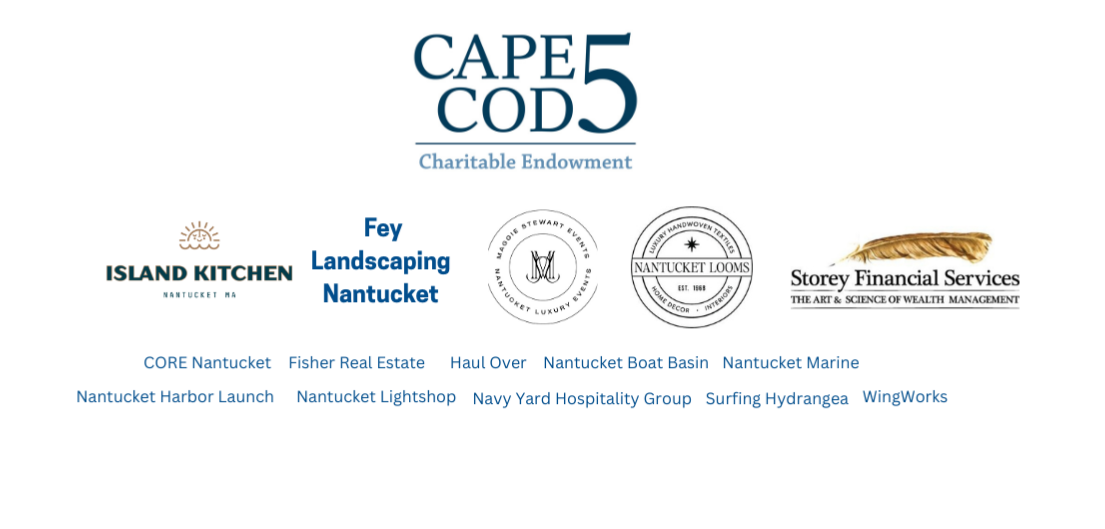
About the Lynx
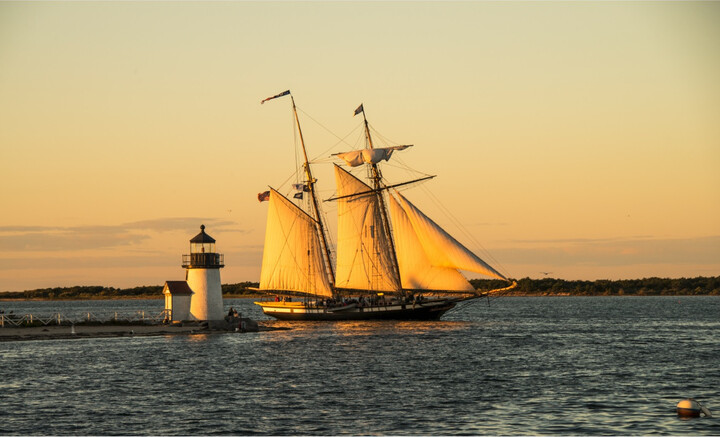
The Tall Ship Lynx is an educational sailing vessel dedicated to hands-on educational programs that teach the history of America’s struggle to preserve its independence, with close attention to the maritime challenges during the War of 1812. The replica Privateer Schooner employs a comprehensive, interactive program designed to enrich personal achievement through teamwork and the discipline of sailing.
Lynx is an interpretation of an actual privateer, Lynx, built by
Thomas Kemp in 1812 in Fell’s Point, Maryland. The original Lynx was among the first ships to defend American freedom; she evaded the British naval fleet, which was blockading American ports at the time, and served in the important privateering efforts. At
the outbreak of the War of 1812, the American Navy consisted of only 17
ships – eight frigates, two brigs, and seven assorted smaller vessels
including a few schooners which where in service during the Barbary Wars. When a
nation went to war, owners of private vessels were granted special
permissions, called “letters of marque,” to prey upon the enemy’s
ships; earning the title of “privateers.” While rarely engaging enemy warships,
the impact of privateers was felt by English merchants who insisted on warship
escorts for their vessels.
In order to perform their duty as an escort, warships were drawn away from engaging the scant American Navy and blockading our coast, and thus the privateers, motivated by profit, assisted in our national defense. Privateers were so effective at running the British blockade and harassing the British merchant fleet that the ship yards that built them, became primary targets for British revenge.
